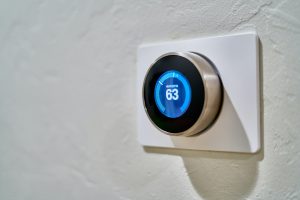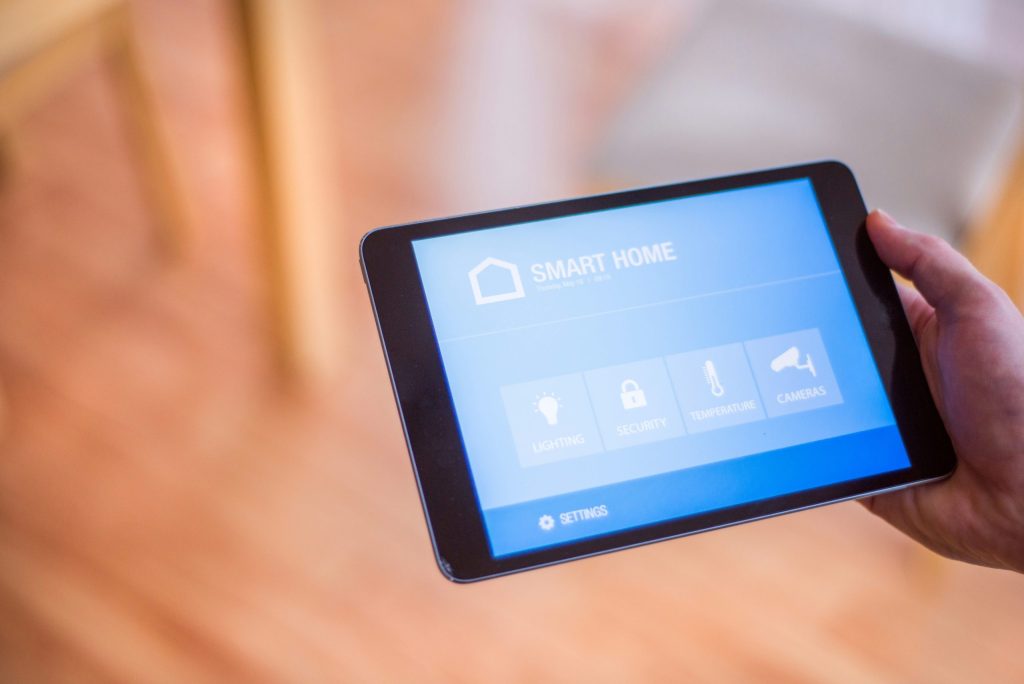Smart home solutions are attractive in various ways. Their main selling point is how much more convenient they make the home. An underrated perk behind smart homes is their ability to improve indoor air quality. Volatile organic compounds can linger in the air, but the right smart home device can detect all that and more.
The Risk of VOC Exposure at a Smart Home
Spending time inside is comfortable. People spend over 90% of their time indoors, with 70% at home. Unfortunately, the concentration of air pollution is higher in this area. Depending on what you keep in the home, you can deal with VOCs like polyethylene, benzene, formaldehyde, xylene and more.
With a smart home, there is a high chance indoor air quality is compromised. Liquid crystal displays on different electronic devices are an underrated source of VOC emissions into the air. VOC exposure is associated with certain lung diseases like asthma. Even with less sensitivity, conditions like wheezing and throat irritation can also occur.
Solving Air Quality With Smart Home Solutions
Electronic devices influence VOC emissions, but there are handy gadgets to combat your air pollutants. Smart home technologies can make the space safer, especially for occupants sensitive to polluted air.
1. Air Quality Monitors
Imagine carbon monoxide and smoke detectors with extra information about different environmental metrics. Air quality monitoring technology can help smart home residents track the quality of their air and detect VOC emissions. The unit typically takes into account the temperature and humidity in its report.
Air sensors are continually being developed. The ideal feature is to measure a specific pollutant among a mix of different air contaminants. Some people can be more sensitive to specific VOCs than others. Being alerted to their presence can allow you to devise countermeasures for their presence and concentration.
2. Smart Air Purifiers
Air purifiers have been known to clean up the air of dust and VOC particles. The main problem is changing the filter to maintain its effectiveness. Thankfully, smart air purifiers can update you on whether a filter needs replacement or maintenance.
Depending on the model, a smart air purifier can be activated by voice control and powered by an app. Read the details of its energy consumption and the pollutant particles collected. Take that insight to gauge whether there’s a new source of VOCs in the home.
3. Smart Thermostat

VOCs are evident, but a few factors can influence their presence in the home. A study found increasing temperatures can trigger VOC emissions from plastic products. Consider getting a smart thermostat to set the space at a colder or room temperature.
The key feature that sets a smart thermostat apart from its regular counterparts is its programmability. Set times when the temperature should increase or decrease. You can also select automated features that sense the climate and adjust for you.
4. Smart Humidifiers
Humidity is another factor that can affect indoor air quality. An imbalance in humidity levels can create an environment where VOCs increase and thrive. Getting a smart humidifier can stabilize the environment and prevent those emissions.
Plus, a humidifier can relieve the sinuses and lessen breathing problems in the long run. If you struggle with sleeping, program the device. Set it to release mist and improve the humidity in a room at certain times at night.
5. Smart Ventilation System
Constant airflow is important to remove pollutants from circulation. Standard ventilation systems can do the trick, but they can consume more energy than needed. Getting smart vents can allow you to improve indoor air quality while keeping utility bills in check.
A smart vent system detects details like the air quality conditions in a home and senses different air cleaning systems. Taking those factors into account influences the ventilation rates and ensures energy efficiency.
Tried and Tested Tips for Indoor Air Quality
Aside from smart home solutions, there are existing ways to improve mitigating VOC exposure in a household. Taking these measures in any building can improve indoor air quality.
1. Declutter the Home
Feeling a little stuffy in your home? More items can result in warmer air quality and staggering airflow, contributing to VOC exposure. Conduct a decluttering spree in different rooms and give away some of your belongings. Make sure to dispose of these items responsibly to ensure less VOC emissions.
2. Switch Cleaning Products

Before you start cleaning after decluttering, examine your cleaning products. Certain liquids can contain VOCs like formaldehyde. Swap them out for a more natural set of cleaning products instead. Vinegar, lemon and baking soda are a powerhouse combination that can eliminate stains and smells in a jiffy.
3. Renovate the Home Wisely
Having a remodeling project can be exciting. However, there are a few things to be wary about. Here are a few examples:
- Paint: Paint is a primary suspect for ruining indoor air quality, especially when freshly applied. Look for VOC-free or low-VOC paint variations before adding color to a room.
- Decor: Keep decorations to a minimum for constant airflow. You can also display live plants to remove the fine VOC particles lingering in the air with their purifying properties.
- Furniture: Some people love the smell of a new couch or chair. However, VOCs from the factory are likely being off-gassed into the air. Consider keeping them outdoors for a while. You can also thrift old furniture since they’ve been aired out.
- Fragrances: Many people like to light a candle to celebrate the completion of their project. However, scented products like air fresheners and perfume can boost VOC levels and affect air quality. Seek natural alternatives like coffee grounds or essential oils.
Have Healthy Smart Home Indoor Air
Smart homes can create a great environment that fights back VOC exposure to keep indoor air quality safe to breathe. Incorporate different devices and practices to make the home cleaner than ever before.

